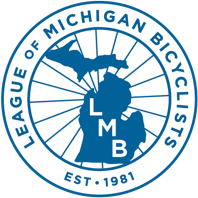We were recently asked what legal recourse a cyclist might have if he was injured while cycling on a bike path or trail maintained by a governmental unit such as a township. Unfortunately, there is not a clear cut answer to this question, because this area of law is extremely complex and unsettled. Generally, a governmental agency is immune from liability where the agency is engaged in the exercise or discharge of a governmental function.1 An exception to governmental immunity arises under the “highway exception” when the governmental unit fails to maintain a highway under its jurisdiction.2 A highway is defined as a “public highway, road, or street that is open for public travel and includes bridges, sidewalks, trailways, crosswalks and culverts on the highway. The term highway does not include alleys, trees, and utility poles.”3
A governmental agency is usually liable for failing to maintain its roads used for vehicular and bicycle traffic.4 Michigan law becomes more confusing as it is applied to other pathways commonly used by cyclists and pedestrians. At first blush, it would seem that a governmental unit would be liable for failing to maintain a bike path or trailway. Unfortunately this is not generally the case. Two relatively recent court decisions have held that a bike path and trailway do not qualify as sidewalks and governmental immunity applies.
In Hatch v. Grand Haven Charter Township, 461 Mich. 457 (2000),4 the Michigan Supreme Court held that a bicycle path did not come within the highway exception to governmental immunity. In Hatch, the plaintiff cyclist crashed and was injured when he struck a hole in a paved bicycle path maintained by the township. The township was sued and ultimately escaped liability for its alleged failure to maintain the bicycle path because the court concluded that the bike path did not qualify as a sidewalk. The court adopted the commonly understood dictionary definition of “sidewalk” – a path for pedestrians along the side of the road.5The fact that it was found that pedestrians used the bicycle path did not convert it into a sidewalk.
It was further held in a 2001 unpublished Michigan Court of Appeals decision, Palmer v. Charter Township of Orion,6 that a cyclist injured on the Paint Creek Trailway could not recover from the township for her injuries. The cyclist alleged that she was injured when she slid into an eroded depression. The court held that the trailway was not a sidewalk for purposes of the highway exception to governmental immunity. The fact that pedestrians used the trail or that portions of the trail were located along or near the highway did not transform the trail into a sidewalk.
Interestingly, an earlier Michigan Court of Appeals decision held that the government was immune from liability for an injury to a rollerblader on the paved “hike-bike” trail in Stoney Creek Metro Park. In Stabley v. Huron-Clinto Metropolitan Park Authority, 228 Mich. App. 363 (1998), the court opined that since the rollerblader’s “fall did not occur on the portion of the trail that runs adjacent to the roadway, but rather on the portion that runs through the wooded interior of the park,” defendant Metro-Park was entitled to immunity. The court concluded that “[b]ecause plaintiff’s fall did not occur on a pedestrian way that ran alongside a public roadway, plaintiff’s fall did not occur on a “sidewalk” within the meaning of MCL 691.1401(e).”7
Does this mean that a cyclist injured on the portion of a bike-hike trail that runs alongside the public road could sue under the highway exception to governmental immunity? The answer to this question is not entirely clear. Based on the decisions of Palmer and Hatch, it appears that the courts are leaning toward eliminating all governmental liability for injuries sustained on any path (whether used for pedestrian traffic or not) that falls outside of the commonly held conception of what constitutes a sidewalk. For those paths that are specifically designated and used as bike paths and trails, it is clear that the government will NOT be held responsible for any injuries attributable to the failure of the government to maintain those paths or trails.
In the next issue, you can look forward to an article pertaining to governmental liability for personal injuries caused by the condition of the roadway. Specifically, we will analyze a recent court of appeals decision that upheld a six million dollar verdict against the City of Bloomfield Hills for failing to maintain Cranbrook Rd. As always, we welcome all questions, ideas and inquiries. Ride Safe!
1. MCL §691.1407(1).
2. MCL §691.1402
3. MCL §691.1401(e)(emphasis added).
4. The Michigan Court of Appeals, in a June 7, 2002 unpublished opinion, upheld a nearly $6,000,000.00 verdict against the City of Bloomfield Hills for injuries sustained by a cyclist due to negligent maintenance of Cranbrook Road. Grenadier v. City of Bloomfield Hills, Michigan Court of Appeals, June 7, 2002, Docket No. 224224. Note, however, that the cyclist was found 80% responsible for her injuries, thus reducing her award to approximately 1.2 million dollars. The issue of governmental liability for defective highway conditions (such as cracks and potholes) will be discussed in greater detail in a future article.
5. The court cases and statutes cited in this article can be found a the following web site: http://courts.michigan.gov/
6. Id. at 464.
7. September 14, 2001 unpublished opinion, Michigan Court of Appeals, Docket No. 220992
8. Id. at 369.
Categorised in: Legal
